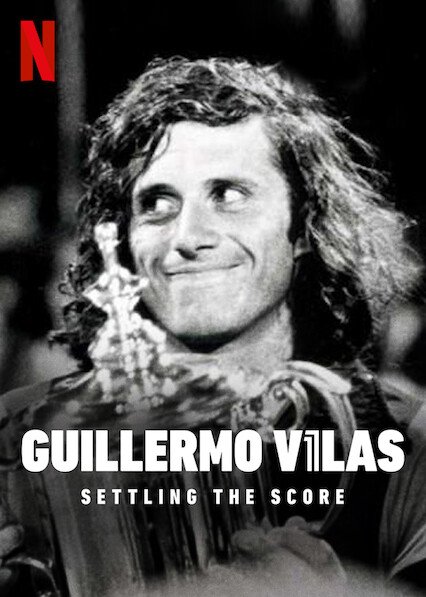Guillermo Vilas: Settling the Score

Ratings: 3.5/5
Duration: 94 Minutes
Language: Spanish
Genre: Documentary
Director: Matías Gueilburt
Writers: Matías Gueilburt, Nicolas Gueilburt, Gianfranco Quattrini
Release Date: 27 October 2020
Released In: Netflix
Star Cast: Boris Becker, Björn Borg, Marian Ciulpan, Roger Federer, Rod Laver, Rafael Nadal, Ilie Nastase, Eduardo Puppo, Gabriela Sabatini, Ion Tiriac, Guillermo Vilas, Mats Wilander
Plot: The documentary runs on two very different narrative tracks. The first, and by far the most colourful, traces Vilas’ career, and the transformations that defined it.
It all begins with the first encounter of young Guillermo in Buenos Aires in the late 1960s, at the tender age of 16. He sports a side part, wears conservative, all-white tennis clothes, swings a wooden racquet, and wonders if his well-heeled parents are right, that he will never make a decent living playing tennis. From there starts his journey of making history. Then follows his evolvement in the early ’70s, one where he writes poetry, plays in a jazz-rock band, and injects some counterculture style into his clubby sport.
Finally, we see Vilas, one who wins 145 matches, 16 tournaments, and two majors over the course of his Herculean 1977 season. His 46-match win streak from that year is still the men’s Open-era record. And yet Vilas is denied the No. 1 ranking. Somehow, despite striking out at the Grand Slams, Jimmy Connors finishes at the top that year.
And this was because the ranking system was quite different in the 70-80s. It was determined by averaging all his results. This meant that the more Vilas played, the less each of his wins mattered.
The film’s second narrative track concerns the quest, by Argentine tennis journalist Eduardo Puppo, to rectify that injustice. In 2007, Puppo read that the WTA had amended its rankings from 1976. He thought he could do something for Vilas, who had been derisively branded ‘The Eternal Second’ by the Argentine press. Vowing to prove that his countryman had been No. 1 for at least some point, Puppo took a 12-year dive down a rankings rabbit hole with the help of his wife but little came out in his favour. He dug through the ATP’s records, tried to recalculate the rankings from 1973 to ’78, and quit in despair at least twice.
Then there is an encounter between Connors and Borg. Connors is his first ‘enemy’, as Vilas describes him when they meet at the Orange Bowl as juniors in the late ’60s. But from there the two developed a comrade where the two long-haired baseliners practice for hours together and help each other with their technique; off-court, and then hang out and eat a lot of ‘yogurt’.
The climax shows Puppo visiting Vilas in Monte Carlo. Their quest has failed, and part of Vilas seems broken by it.
Review: Are you a fan of 1970s men’s tennis and esoteric statistical investigations? If so, you are going to love Netflix’s documentary about Guillermo Vilas, and his long-running quest to be retroactively crowned a world No. 1 player. And if you care about the triumphs and heartbreaks of great athletes, you might love it even more.
Few outsides of dedicated tennis aficionados would have heart about the South American player Guillermo Vilas, and his story of striving for greatness and being repeatedly denied it through no fault of his own. His story will likely resonate with most regardless of the fact whether you follow tennis, or if you have ever heard his name.
There is nothing out of the place about the construction of Guillermo Vilas: settling the Score. There is plenty of audio and video footage, some stylistic flourishes in how certain portions are framed and how certain information is presented. The narrative is kept quite a lucid through-line with an end goal in mind.
The only real knock against it is that it can sometimes move towards that goal at a too-agreeable pace, becoming a little self-indulgent on its way.
Overall, the movie is not a stretched one but there is a lot of very long establishing shots here that make this film feel longer than it is. At one point, there is a good 30 second shot of Paris in 1977. One cannot help but feel these moments unnecessarily pad out the film longer than it perhaps should be.
Luckily, the crux of the matter is compelling enough that the story always finds its feet again, especially in the final third. Those who are fans of the sport will be satisfied with the way this film looks into it at a specific time in its history – not to mention the cameos from some all-time-greats – and most people will be satisfied with the human-interest story at its heart.
That is a minor gripe though in truth to what’s otherwise a pretty enjoyable documentary. Tennis fans across the world will undoubtedly get more out of this film. It is a delight to see the life of one of the best in the history of Tennis. Our recommendation would be - a must-watch!















































